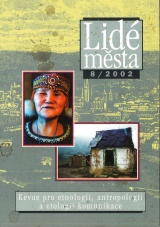Čeští nekatolíci v rumunském Banátu a v Bulharsku
Část čtvrtá - Religiozita reemigrantů. Závěry.
DOI:
https://doi.org/10.14712/12128112.4213Abstrakt
After World War Two the Banat and Bulgarian non-Catholic Czechs took part in a repatriation scheme for the Czech community abroad and resettlement of the Czech borderland. In the case of Svatá Helena this related to roughly one half of the village which was primarily settled in West Bohemia (Cheb) and North Bohemia (Lovosice); in the case of Vojvodovo it was almost an entire village, resettled in South Moravia around the town of Mikulov. Moreover, since their specific religious feelings were preserved, at least in the first generation of re-settlers they played a role of a significant group integration factor in relation to the largely atheist surrounding Czech environment. The communities arisen from the repatriation from the Bulgarian Vojvodovo created in Moravia Metbodist and Christian congregations (the "Darbist" daughter church) and they relatively successfully defended their religious character against state intervention. For all the massive propaganda and numerous reprisals cutting across the society at least in the first generation the Communist authorities failed to eradicate the religious belief of the Vojvodovo re-settlers. However, the belief started to fade away in the second generation, certainly in association with a gradual integration of the village with the Czech environment. The "fathers' belief" is still being remembered and respected, but the proportion of practising church-goers no longer exceeds their proportion in the entire Czech society. In the case of re-settlers from Svatá Helena the situation was somewhat different; first and foremost, a distinction should be made between the repatriated Catholic and non-Catholic communities. The former predominantly settled in the countryside and it rapidly merged with the surrounding Czech environment, while the Svatá Helena Baptists created very compact congregations in Cheb and Lovosice, distinguished with their staunch religious feelings enhancing their isolation. The congregations almost withstood secularisation until the early 1990s, when they (especially the Cheb congregation) started to organise a new repatriation wave of their coreligionists from Svatá Helena, which was called the " 1990s resettlement". It is typical of individual (family) character and a strong intra-confessional character as well as a strict, religiously motivated ascetic ethic of the newcomers in the Czech Republic, sharply contrasting (e. g. in working relations) with the principles and habits of the Czech majority society. It is phenomenon which still lasts and which, though at a very slow pace, has started to be transferred to the Catholic Banat Czechs, too. However, the basic division into Baptists, with sectarian leanings, and Catholics has survived even among the re-settlers in the same scope. Tbe four parts of the presented tudy successively examined the religious development of the non-Catholic part of the Czech enclave in Banat (the present-day Svatá Helena) and its daughter village of Vojvodovo in northwestern Bulgaria. The historical-religious method and socially anthropological method made it possible for us to formulate some quite new conclusions. ln the first place, this means an essential distinctive character of Czech non-Catholics (originally sectarians of the tolerance period) in Banat with which they differed from their Catholic fellow citizens. This difference included both their origin and further development. We tried as the first researchers in the modem ethnographical research to highlight the basic nature of the religious question if this group is studied from any aspect. We also showed that religious identity was the most important factor, both differentiating and preserving in terms of ethnicity, in the case of Svatá Helena and Vojvodovo, while it partly kept its role among the re-settlers after World War Two. A different post-war development, a relative loss of religious feelings among the Vojvodovo re-settler compared to those from Svatá Helena can be attributed to the previous transformation of Vojvodovo into a local community of the denomination type, while the sectarian type of religious belief has survived in Svatá Helena until now.
Stahování
Publikováno
Jak citovat
Číslo
Sekce
Licence

Tato práce je licencována pod Mezinárodní licencí Creative Commons Attribution-NonCommercial-NoDerivatives 4.0.


